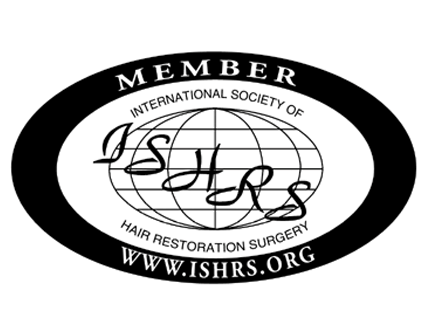Triangular alopecia, also known as temporal triangular alopecia or congenital triangular alopecia, is a relatively rare form of hair loss. Unlike androgenetic alopecia (male or female pattern baldness) that occurs due to hormonal factors, triangular alopecia is characterized by a distinct triangular or oval-shaped bald patch on the scalp. This patch typically appears near the temples or in the frontal temporal region, creating a unique pattern of hair loss. The exact cause of triangular alopecia remains unknown.
Triangular alopecia can be emotionally distressing, as it typically appears in a highly visible area of the scalp.
Triangular Alopecia and Alopecia Areata
Triangular alopecia is often misdiagnosed and can sometimes be confused with alopecia areata given the presentations can be similar. Often triangular alopecia will present from birth or childhood with no regrowth in the affected areas, while alopecia areata can develop at any stage in life and can present with multiple areas of hair loss that can regrow spontaneously. The location of the hair loss can often be another differentiating factor with triangular alopecia most common near the temples and often appearing on both sides. A hair loss specialist will be able to clinically diagnose the cause of the hair loss with an examination of the scalp.
Treating Triangular Alopecia with Hair Transplant Surgery
A consultation with one of the doctors at HRBR will allow them to assess the area of hair loss and confirm a diagnosis of triangular alopecia. Medical treatments are usually ineffective in patients suffering from triangular alopecia. Hair transplant surgery is usually the only treatment option open to those with this type of hair loss but is a very effective treatment.
Hair is harvested from the healthy donor area round the back and sides of the scalp either by FUT or FUE and transplanted into the areas of triangular alopecia. The team ensures that the transplanted hair follows a natural pattern and blends seamlessly with the surrounding hair.
Around 6 months following surgery patients will begin to see the transplanted hair grow with full growth normally seen about 18 months following surgery. This gradual process means that surgery often goes unnoticed to those around the patient.
Triangular alopecia may be a unique and relatively rare form of hair loss, but it can still have a significant impact on an individual’s self-esteem and confidence. Hair transplant surgery offers an effective and permanent solution to this condition.
HRBR have treated many cases of triangular alopecia and have excellent experience in the treatment of this condition with hair transplant surgery.
For more information on hair hair loss or if you would like to find out more about treatment for triangular alopecia the team at HRBR are ready to assist. Contact the team on 00353 1 209 1000 or info@hrbr.ie










